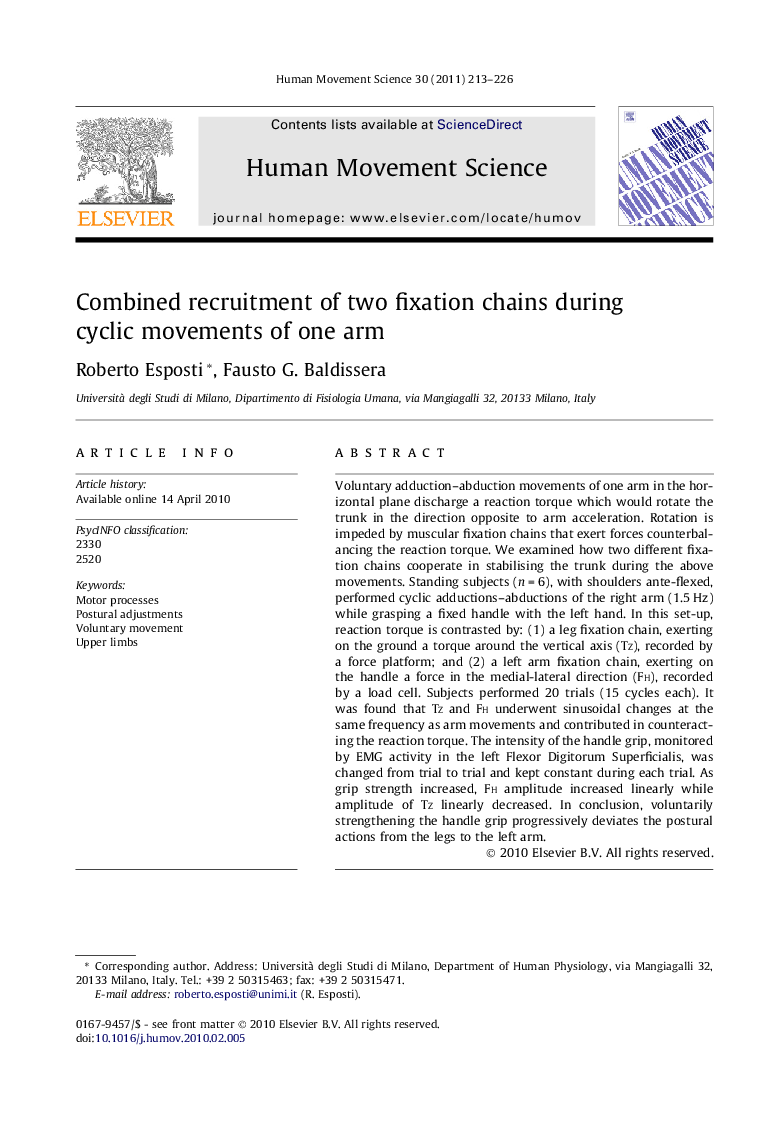| Article ID | Journal | Published Year | Pages | File Type |
|---|---|---|---|---|
| 928650 | Human Movement Science | 2011 | 14 Pages |
Voluntary adduction–abduction movements of one arm in the horizontal plane discharge a reaction torque which would rotate the trunk in the direction opposite to arm acceleration. Rotation is impeded by muscular fixation chains that exert forces counterbalancing the reaction torque. We examined how two different fixation chains cooperate in stabilising the trunk during the above movements. Standing subjects (n = 6), with shoulders ante-flexed, performed cyclic adductions–abductions of the right arm (1.5 Hz) while grasping a fixed handle with the left hand. In this set-up, reaction torque is contrasted by: (1) a leg fixation chain, exerting on the ground a torque around the vertical axis (Tz), recorded by a force platform; and (2) a left arm fixation chain, exerting on the handle a force in the medial-lateral direction (Fh), recorded by a load cell. Subjects performed 20 trials (15 cycles each). It was found that Tz and Fh underwent sinusoidal changes at the same frequency as arm movements and contributed in counteracting the reaction torque. The intensity of the handle grip, monitored by EMG activity in the left Flexor Digitorum Superficialis, was changed from trial to trial and kept constant during each trial. As grip strength increased, Fh amplitude increased linearly while amplitude of Tz linearly decreased. In conclusion, voluntarily strengthening the handle grip progressively deviates the postural actions from the legs to the left arm.
